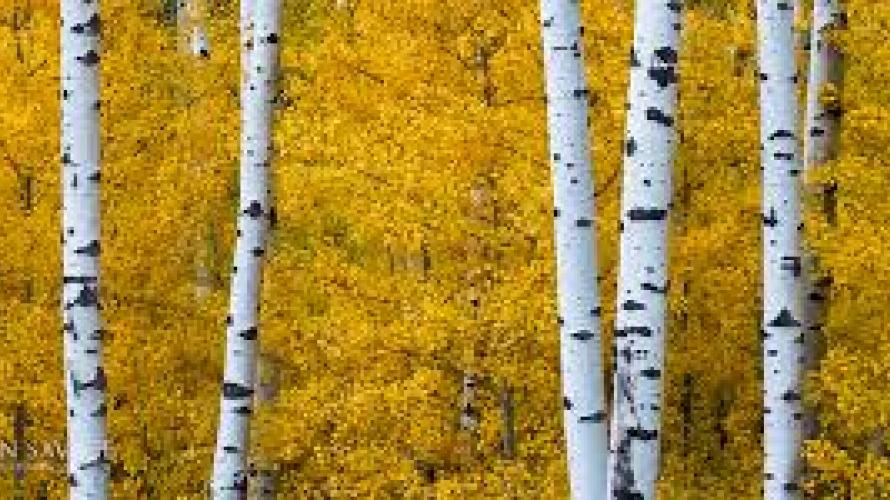
The Glory of Aspens
~Sean Jansen
If one were to truly think about it, trees as a whole are the single most important organisms on this planet. They provide wood for fires to keep warm and to create heat for cooking. Offer timber for shelter out of the elements. Some offer fruits and nuts for edible options. And most importantly, they provide oxygen for us to breath whilst also consuming CO2 during photosynthesis, being the active catalyst on our front line battle against climate change.
With trees inhabiting six of the seven continents, they all vary in color, size, shape, and season. For us in Montana, we have numerous amounts of tree species in all altitudes the state offers. However out of them all, the Aspen shows its seasonal colors better on the fashion runway then the rest.
Aspens, or Populus Tremuloides, also known as quaking aspen, are the most wide spread tree in North America. They can be seen in 39 of our 50 states and north through Canada and into Alaska. Even a few areas in Mexico. Ranging in size with regards to girth of trunk and height, the smallest can have trunk widths of less than an inch, while rare, can also be seen with nearly a two-foot diameter and reach heights upwards of 80 feet. Living up to 150 years with some old timers going into 200 years.
Their bark is unique in that it has a white color that can indeed show hues of grey and green that produces a powdery substance that shows the trees health but also can be used for a variety of medicinal purposes as well as protection from the sun when placed on the skin. However what makes the aspen infamous, are its leaves. In the summer months, the small bright green leaves make the landscape vibrant with green amongst the border of the coniferous forests they dwell. But its fall colors of bright orange, yellow, and occasionally red are what can literally be seen from space and remind us all of the seasonal change.
They are called the quaking aspen because if one were to go on a hike in an aspen grove with a slight breeze, you can hear the leaves almost whispering to one another. I personally love hiking, running, and fly fishing along aspens because it almost seems like the leaves are clapping at your presence, encouraging you to keep going.
Beyond its gorgeous visual stimulation, the trees provide shelter, food, and repair to a multitude of animal species and damaged landscapes. They are quick to recolonize areas after a burn, as they need nothing more than water and lots of sunshine. Black bear, moose, elk, deer and an array of rodents and birds all need aspen for food and shelter.
On a curious note, aspens are quite useful for humans as well. Their wood is considered a soft wood however can be quite strong and we use it for particleboard, tooth picks, chopsticks, and line our saunas with them, as they will never splinter as you sit and enjoy a good sweat. Montana certainly isn’t the headquarters of the quaking aspen, but our landscapes, altitude, environment, and climate all make for a great field office that I as well as many others love to see this time of year.
Websites used for information:
https://www.fs.fed.us/wildflowers/beauty/aspen/grow.shtml
https://www.nationalforests.org/blog/tree-profile-aspen-so-much-more-than-a-tree
